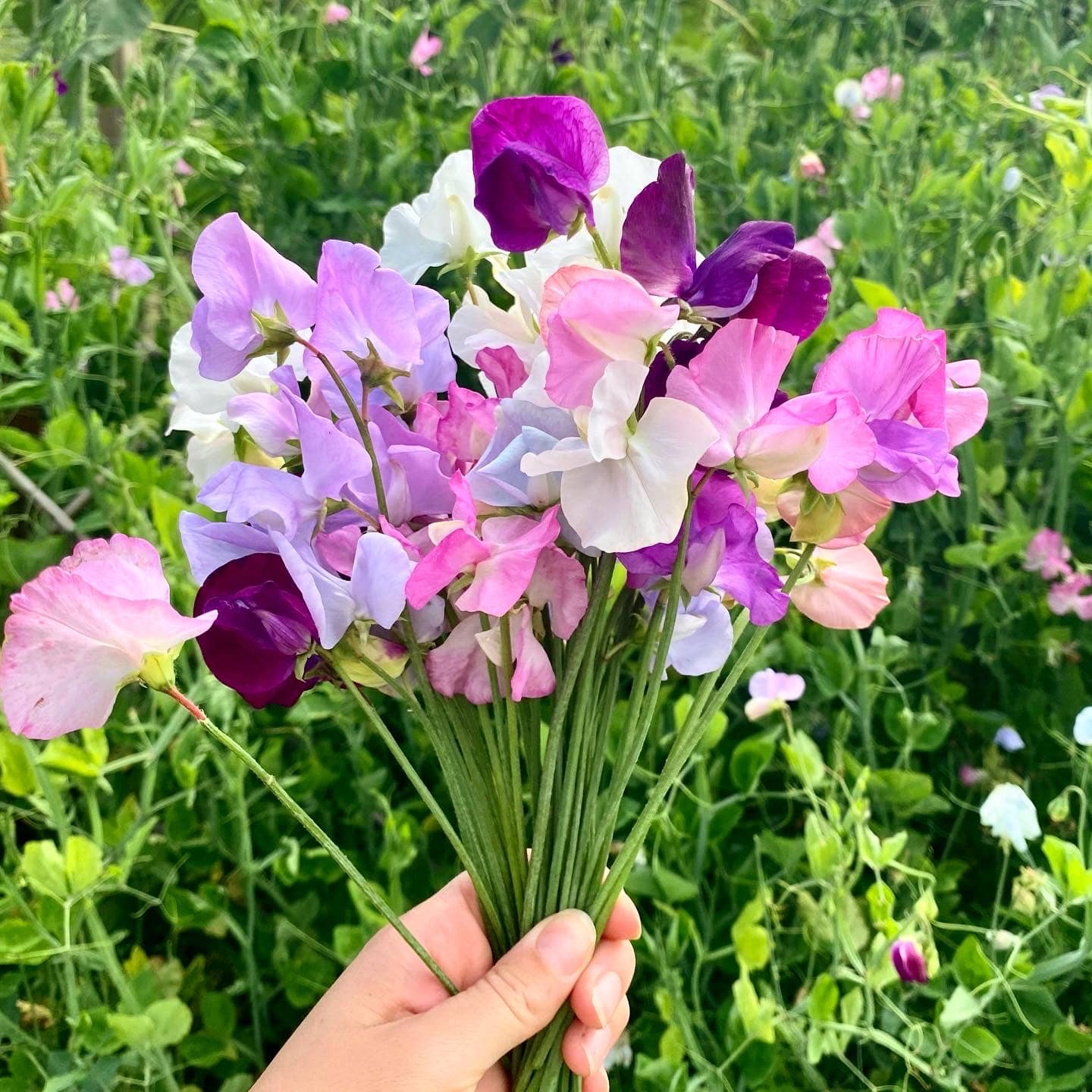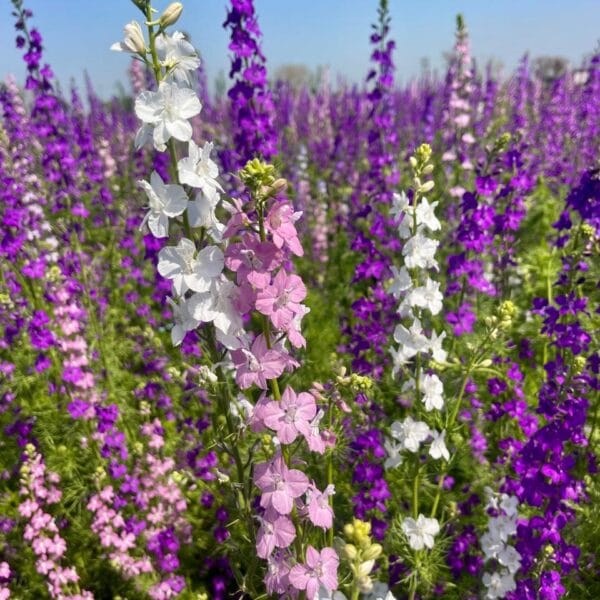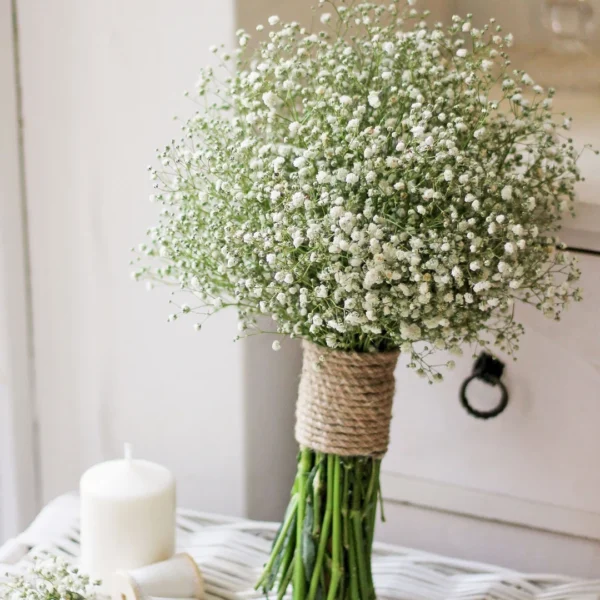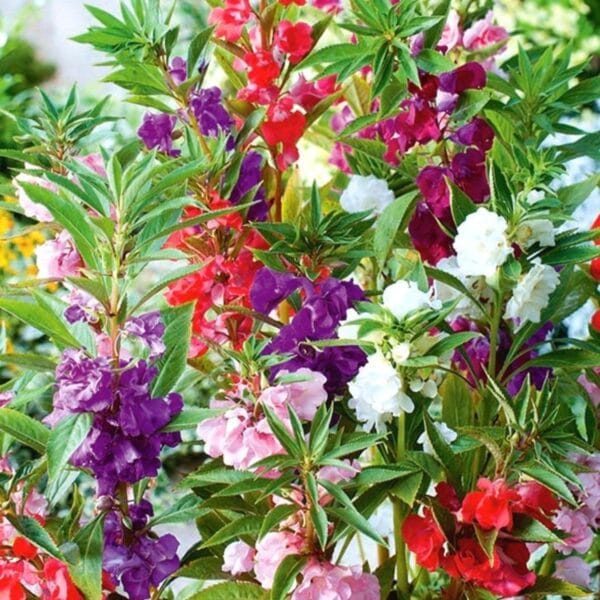Sweet Peas open pollinated flower seed
Sweet Peas open pollinated flower seed
Qunatity :50seeds+
Sweet peas (genus Lathyrus), known for their beautiful, fragrant blooms, are a popular flower for gardens. Growing sweet peas from seeds is a rewarding experience, as they are relatively easy to grow, and their sweet fragrance and vibrant colors make them a favorite for cut flowers.
Sweet Peas open pollinated flower seed
Sweet Peas open pollinated flower seed
Sweet peas (genus Lathyrus), known for their beautiful, fragrant blooms, are a popular flower for gardens. Growing sweet peas from seeds is a rewarding experience, as they are relatively easy to grow, and their sweet fragrance and vibrant colors make them a favorite for cut flowers. Here’s a comprehensive guide on how to grow sweet peas from seeds:
Step-by-Step Guide to Growing Sweet Peas from Seeds
1. Choose the Right Location
- Sunlight: Sweet Peas open pollinated flower seed thrive in full sun. They need at least 6-8 hours of sunlight each day to grow and bloom well. However, they also tolerate some afternoon shade, especially in warmer climates.
- Soil: Sweet peas prefer well-drained, fertile soil with a slightly alkaline to neutral pH (around 6.0–7.5). They grow best in loamy or sandy soil, so ensure that the soil is not too heavy or clayey.
- Space: Sweet peas are climbing plants and need a trellis, fence, or other support to grow vertically. Make sure you have enough vertical space or install supports like garden stakes, netting, or a pea trellis for them to climb.
2. When to Plant Sweet Peas
- Timing: Sweet Peas open pollinated flower seed are usually planted in early spring, after the last expected frost date in your region, or fall in mild climates. They prefer cooler temperatures, typically around 55-65°F (13-18°C). They can tolerate a light frost but should not be exposed to freezing temperatures for long.
- Indoor Sowing (Pre-Germination): In regions with very cold winters, you can start sweet pea seeds indoors about 6–8 weeks before the last frost. This will give the plants a head start. If sowing outdoors, wait until the soil can be worked and has warmed slightly.
3. Prepare the Soil
- Soil Preparation: Prepare your soil by loosening it to a depth of about 4–6 inches. Sweet peas have long taproots, so deep, well-drained soil is essential for their healthy growth.
- Amend the Soil: If your soil is heavy (e.g., clay), improve it by adding organic matter such as compost or well-rotted manure to improve drainage. Sweet peas do well in soil that’s nutrient-rich, but avoid too much nitrogen, which can promote leafy growth at the expense of flowers.
4. Scarifying the Seeds (Optional)
Sweet Peas open pollinated flower seed have a hard outer shell, which can make germination slow. Scarifying or nicking the seeds helps them absorb water and germinate more quickly.
- How to Scarify: Use a nail file, sandpaper, or a pair of scissors to gently nick the seed coat, taking care not to damage the seed itself. Alternatively, you can soak the seeds in warm water for 12–24 hours before planting to soften the seed coat and help speed up germination.
5. Sowing the Seeds
- Indoor Sowing (Seed Trays): Fill seed trays or small pots with a lightweight seed-starting mix. Space seeds about 1–2 inches apart. Plant them about 1 inch deep (about twice the seed’s size) and lightly cover with soil. Place the trays in a warm location (60–65°F or 15–18°C) and keep them moist, but not waterlogged. Ensure they get plenty of light for strong seedling growth.
- Outdoor Sowing: For direct sowing outdoors, dig small holes or trenches that are about 1 inch deep. Space Sweet Peas open pollinated flower seed about 1–2 inches apart, and lightly cover with soil. Keep the soil moist, but not soggy.
6. Watering and Germination
- Germination: Sweet Peas open pollinated flower seed usually take about 10–20 days to germinate, depending on temperature and moisture levels. Keep the soil moist during this time to help the seeds sprout. If starting indoors, place the pots in a bright, sunny spot or under grow lights.
- Watering: After germination, keep the soil consistently moist, but ensure good drainage to avoid waterlogging, which can lead to root rot.
7. Transplanting (If Started Indoors)
- When to Transplant: Once your Sweet Peas open pollinated flower seed have grown large enough (with at least a few sets of true leaves) and the weather has warmed up, they can be transplanted outdoors. This usually happens after the last frost has passed and daytime temperatures are mild (around 55°F or 13°C).
- Hardening Off: Before transplanting them outside, harden off the seedlings by gradually acclimatizing them to outdoor conditions. Place them outside in a shady, sheltered spot for a few hours each day, and increase the exposure to direct sunlight over the course of a week.
8. Planting Outdoors
- Spacing: Space sweet pea plants about 6–12 inches apart for compact varieties and 12–18 inches for larger varieties. If planting in rows, space the rows about 18–24 inches apart to allow room for growth and airflow.
- Trellis or Support: Install a trellis or support structure for climbing. Sweet peas are vining plants, so they need something to climb on. Pea netting, chicken wire, or a garden trellis will all work well. Install the support structure before planting, as it will be harder to do so once the plants are established.
9. Fertilizing
- Feeding Sweet Peas: Sweet Peas open pollinated flower seed are relatively low-maintenance in terms of feeding. However, you can apply a balanced organic fertilizer or a low-nitrogen fertilizer to encourage healthy flowering. Too much nitrogen can lead to excessive leafy growth and fewer flowers.
- Organic Matter: Adding compost or well-rotted manure to the soil before planting provides the necessary nutrients. For established plants, a liquid fertilizer applied every 4-6 weeks can promote blooming.
10. Care and Maintenance
- Watering: Water regularly, especially during dry periods, but avoid overwatering. Sweet peas prefer moderate moisture. Keep the soil consistently moist, but not soggy. Water at the base of the plants to avoid wetting the foliage.
- Pinching Back: To encourage bushier growth and more blooms, you can pinch back the growing tips of young plants when they reach about 6 inches tall.
- Mulching: Apply a thin layer of mulch around the plants to retain moisture and suppress weeds.
11. Harvesting and Deadheading
- Deadheading: Regularly remove spent flowers to encourage more blooms and prolong the flowering season. This is especially important if you are growing sweet peas for cutting.
- Cutting Sweet Peas: Sweet Peas open pollinated flower seed make excellent cut flowers. Harvest them early in the morning, when the stems are fully hydrated, for the longest vase life. Cut the stems at a 45-degree angle to encourage water uptake.
12. End of Season Care
- Overwintering: In mild climates, sweet peas may overwinter, but in colder regions, they will die back after the first frost. After the flowering season ends, remove spent plants and compost them to prepare your garden for the next growing season. Sweet Peas open pollinated flower seed
| Weight | 25 g |
|---|---|
| Dimensions | 11 × 8.5 × 11 cm |







Reviews
There are no reviews yet.